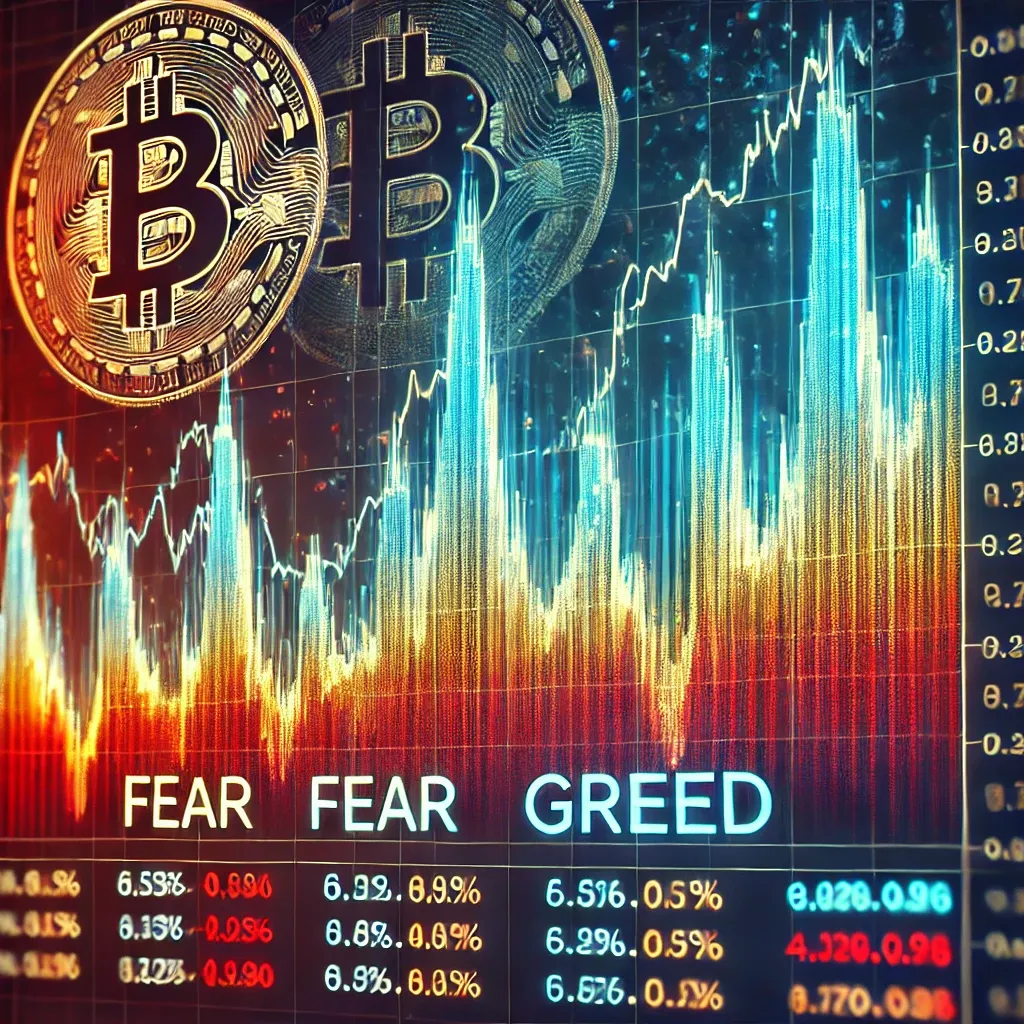Have you ever wondered how Bitcoin’s market sentiment can impact its price and influence investor decisions? The Bitcoin Fear and Greed Index provides a snapshot of the emotional state of the market. By understanding these two extreme emotions—fear and greed—you can gain insights into market trends, and even predict potential price movements. But what exactly is this index, and why is it so crucial for Bitcoin investors?
What Is the Bitcoin Fear and Greed Index?
The Bitcoin Fear and Greed Index is a tool that gauges the sentiment of the Bitcoin market, moving between two extremes: fear and greed. This index is designed to provide investors with a quick overview of whether the market is overly fearful or overly greedy, helping them make more informed trading decisions.
- Fear: When the market is in fear mode, investors tend to act conservatively, pulling out of their positions and waiting for a better entry point.
- Greed: In a greed-driven market, investors tend to take on more risks, pushing prices higher in hopes of short-term profits.
The index is typically presented as a graph, and it fluctuates based on several factors, including volatility, market momentum, social media trends, surveys, and Bitcoin’s price movements.
The Bitcoin Fear and Greed Index Chart
The Fear and Greed Index is represented visually through a graph or chart that displays the fluctuating levels of fear and greed over time. The chart usually ranges from 0 (extreme fear) to 100 (extreme greed). A sudden shift in this index can indicate potential market reversals, making it a valuable tool for traders and investors alike.Here’s what you should know about reading the index chart:
- Range of 0-50: Represents a fearful or neutral market, with values closer to 0 indicating more fear.
- Range of 50-100: Indicates a greedy market, with values approaching 100 signaling extreme greed.
- Movement Patterns: A rapid movement from fear to greed (or vice versa) may signify an upcoming market shift.
For example, when the index reaches extreme greed levels, it’s often a warning signal for a market correction, as investor optimism may be overinflated. Conversely, during periods of extreme fear, the market could be underpriced, presenting buying opportunities.
Key Indicators to Watch in the Chart:
- Bitcoin’s price: A significant rise or fall can drastically affect sentiment.
- Market volatility: Increased volatility tends to generate fear.
- Social media activity: Positive or negative tweets and news can drive sentiment.
- Market momentum: A sudden bullish or bearish trend can swing the index.
Bitcoin Fear and Greed on Twitter
One of the most immediate ways to gauge the emotional pulse of Bitcoin investors is by looking at Bitcoin Fear and Greed on Twitter. The social media platform has become a hotbed for cryptocurrency discussions, where opinions, rumors, and news stories spread quickly. By monitoring Twitter sentiment, you can get a pulse on how traders feel about Bitcoin in real-time.
- Hashtags: Trends like #BitcoinFear or #CryptoGreed can signal how traders are feeling.
- Twitter Sentiment Analysis: Tools that analyze tweets can provide an aggregated measure of overall sentiment, helping you understand whether the market is leaning toward fear or greed.
Some traders follow Twitter accounts that specialize in Bitcoin sentiment analysis, using these insights to predict market trends. As sentiment often shifts rapidly, it’s crucial to stay updated on what’s being said across social media channels.
Signs to Watch for on Twitter:
- Positive Sentiment: If most tweets are optimistic about Bitcoin, the market might be entering a greedy phase.
- Negative Sentiment: Widespread concerns or fear in tweets could indicate a fearful market.
- Shifts in Tone: Watch for sudden tone shifts, as these often align with major market movements.
History of the Bitcoin Fear and Greed Index
The history of the Bitcoin Fear and Greed Index offers fascinating insights into how Bitcoin’s market sentiment has evolved. By looking at past data, investors can better understand how Bitcoin reacted during times of extreme fear or greed, helping to forecast future market behavior.For instance:
- During major Bitcoin price crashes, the index has often hit extreme fear levels.
- During Bitcoin bull runs, the index has spiked into extreme greed territory, signaling potential market bubbles.
- Long-term trends in the index can reveal underlying shifts in investor psychology, often ahead of significant price changes.
Understanding the history of this index can help investors prepare for similar patterns in the future. If we look back at past market cycles, we can see how certain extreme levels of the index aligned with major price movements.
Key Historical Insights:
- 2017 Bitcoin Boom: The index reached extreme greed during the price surge, followed by a sharp crash.
- 2020-2021 Bull Market: A long period of greed signaled one of Bitcoin’s largest upward movements.
- Bear Market Events: Extreme fear was a precursor to market recoveries in many cases.
- Major Price Corrections: The index often signals price corrections before they happen.
Conclusion
The Bitcoin Fear and Greed Index offers more than just a snapshot of market sentiment—it’s a powerful tool that helps investors understand the emotional drivers behind price movements. By keeping an eye on the index, Twitter sentiment, and historical data, traders can make smarter, more informed decisions. Remember, the market is often driven by emotion, and understanding fear and greed can help you navigate the volatile world of Bitcoin with greater confidence.As Warren Buffett once said, “Be fearful when others are greedy and greedy when others are fearful.” By tracking the Fear and Greed Index, you’re already ahead in understanding market sentiment and making the right moves.






